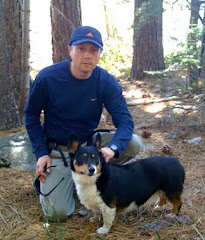Set in Colonial India, in a time of growing friction between the ruling British and Indian populace, The Luminist tells the story of Catherine Colebrook, an Englishwoman living in Ceylon, and a fifteen-year  old Tamil boy, Eligius Shourie, who is brought as a servant to the Colebrooks’ neglected estate. Catherine’s obsession to arrest beauty—to select a moment from the thousands comprising her life and hold it apart from memory—transforms Eligius into her apprentice in the creation of the first haunting photographs in history, even as their fragile world crumbles.
old Tamil boy, Eligius Shourie, who is brought as a servant to the Colebrooks’ neglected estate. Catherine’s obsession to arrest beauty—to select a moment from the thousands comprising her life and hold it apart from memory—transforms Eligius into her apprentice in the creation of the first haunting photographs in history, even as their fragile world crumbles.
Please join me in welcoming David Rocklin.
In early 2004, I went to the Getty Museum in Los Angeles. They were exhibiting photographs from the earliest days of the art, including a number from Julia Margaret Cameron. Now, I’m not a photographer – I’m the one waiting for it to tell me how to use it when you ask me to take a picture of you and your family. I’d never heard of Ms. Cameron or her work. I am, though, very visual. Everything I’ve written had its start not as a theme or a character, but as an image that I could not shake, that hinted at a larger story.
The photographs I saw that day really moved me. Those faces had a lost quality to them when viewed from a distance; here, after all, was a wall of people who died before I’d ever encountered them. Individual moments of whimsy, contemplation, mourning, a child’s exasperation at having to wear wings. The first image I saw, of a woman half-shrouded in shadow, was stunning. Her face emerged from the dark into a muted light. She was unreadable. The model, as it turned out, was Julia Jackson, the mother of Virginia Woolf (I wrote a blog about that image, and the serendipity that caused it to become the cover of the novel).
After the Getty, I did a bit of research on Ms. Cameron. She was unique for her time, a Victorian woman who obsessively pursued this unknown art and science despite all societal expectations or barriers. The likes of Charles Darwin, Lord Tennyson, Robert Carlisle and Sir John Herschel sat for her, enduring the interminable stillness necessitated by the technology of the time. She saw something like prayer in her work, and made of it images to rival painting.
I found a quote of hers: “I longed to arrest all beauty that came before me…” Her quote took on a newly relentless, tragic meaning when I learned that she lost a child shortly after birth. An image of her started to form, but from a vantage point outside of her, as if I was observing her from the eyepiece of an old camera.
That’s where the story started. What transpired is completely fictionalized, but my jumping-off point began that day at the Getty.I really lived with this world for quite a while before starting the book. I realized early on that even if I travelled to India, I could not find the setting for the book. Ceylon no longer exists as it was. More importantly, the moment that really drives everything in “The Luminist” no longer exists: that moment before the first photographic image existed, before that instant of fast-passing life could be held still. And then, it could.
So much of what I learned from writing The Luminist is making the journey with me towards realizing the new novel I’m working on. Patience with the stops and starts of the first draft (the characters were really battling for dominance in voice, and I’ve re-started the book three times now). Immersion in the world, and once immersed, picking my battles from amongst so many possibilities. Daunting and exciting – that tangled emotional combination that I think all writers know.
Thank you, David. We wish you much success with this fascinating novel. To learn more about The Luminist and David, please visit his website.















